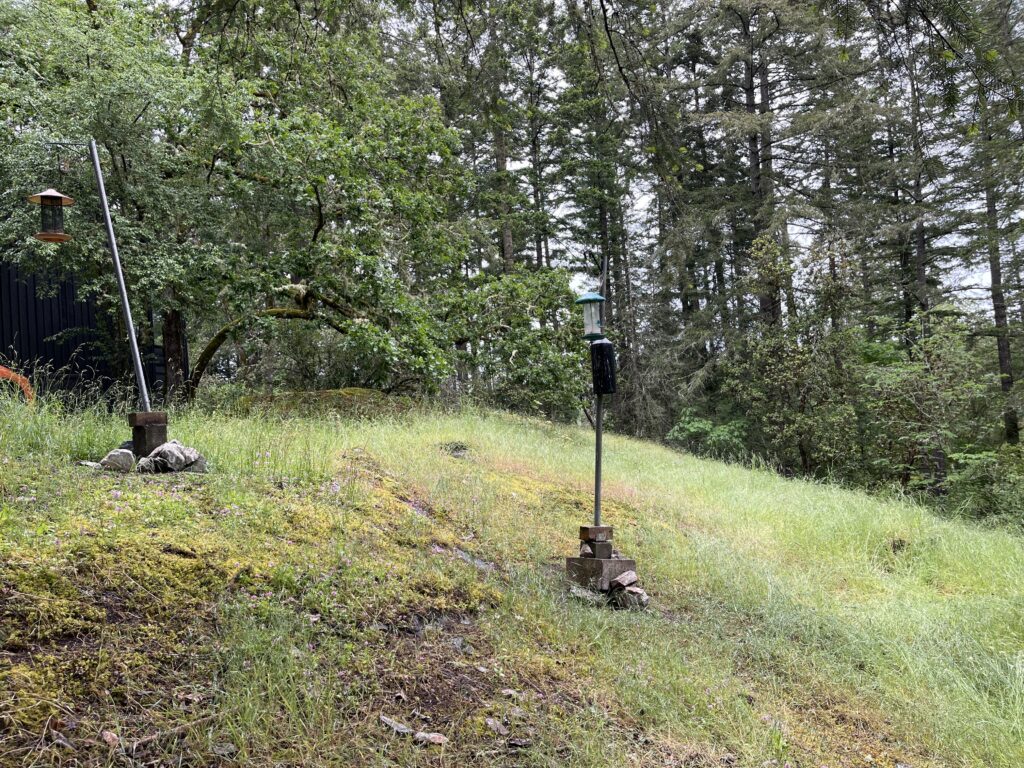Date: May 1, 2024
Project: Field Research in the Haines Forest, Saanich Inlet, BC
Surveyor: Jennifer Rodriguez
Location: 161 Lohr Road, Saanich, BC
Weather conditions: 14 C, partly cloudy, no precipitation, no wind.

Identifying the Study Organism
The biological attribute I plan to study is native plant species richness within two different substrate types in a Garry oak forest. Garry oak and associated ecosystems are home to more plant species than any other terrestrial ecosystem in coastal British Columbia. Many of these species occur nowhere else in Canada. As of today, less than 5% of the original habitat remains in a near-natural condition. Deeper soil sites in Garry Oak ecosystems seem organically enriched with Ah horizons, however, shallow soils underlain by bedrock endure persistent exposure to insolation and wind. Therefore, plant species richness could be strongly influenced by site-level conditions.
Hypothesis: Shallow soils have the lowest species biodiversity
Prediction: If the hypothesis is true shallow soils will have less biodiversity, but the deeper soil sections will have the highest number of native species, this is because thin soils dry out in the summer, so they should support less number of species.
Response Variable: Number of native plant species. Continuous.
Explanatory Variable: Substrate types. This is categorical as the different areas are categorized into shallow and deep soil.
Design Considerations
Sampling Method: Systematic placement of 1m2 quadrants along predetermined transect intervals (0, 5, 10, 15, 20, 25, 30, 35, 40, 45, and 50 meters) to ensure representative.
Data Collection: Within each quadrant, the number of native species will be recorded along with the substrate type (shallow vs. deep soil). Two replicates per distance (left-A and right-B to the transect) will be collected to ensure statistical significance in the results.